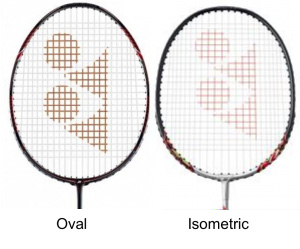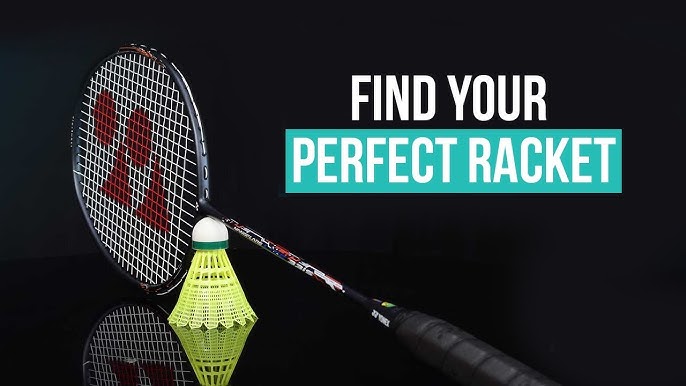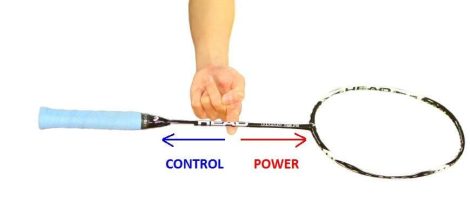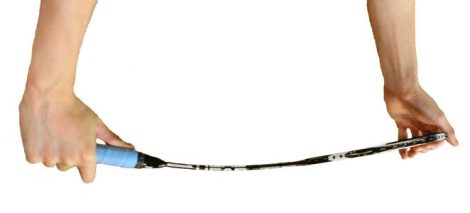Badminton enthusiasts know that picking the right racket can elevate their game. With so many options available, selecting the ideal racket requires a balance between skill, comfort, and style. Here’s how you can choose the perfect one.
Inside each racket extend, Yonex tend to do four versions:
Play – are the most flexibile rackets in the extend, perfect for fledgling players who have a slower overhead activity so are helped by the expanded adaptability.
Game – are a flexible/medium adaptability outlined for club players with a way better procedure but still looking for expanded forgivness.
Tour – these rackets tend to be medium to firm adaptability which makes them a awesome choice for middle players who hit with more speed and require a racket to respond as rapidly as they do.
Pro – the stiffest rackets in the run, as utilized by the progressed and proficient players who require exceptionally small whipback from the racket in arrange to create most extreme control.
Shape Of The Head
The shape of the head in a badminton racket plays an essential role in the racket’s performance, affecting the sweet spot, power, and control. There are two main head shapes:
1. Isometric Head Shape:
The frame is squarer, giving the racket a more rectangular head.
Advantages:
Larger sweet spot, which provides more forgiveness on off-center shots.
Popular among players who prioritize consistency and control.
Usage:
Frequently used in modern rackets by both beginners and advanced players.
2. Oval (Traditional) Head Shape:
The frame is more oval or rounded.
Advantages:
Smaller sweet spot, but offers better concentration of power when the shuttlecock hits the center.
Preferred by players who focus on precision and powerful shots.
Usage:
More common in older models or among players with excellent technique.
In summary, isometric heads are better for players seeking more margin for error, while oval heads cater to players looking for pinpoint precision and power.

Balance Of The Frame
The balance of the frame in a badminton racket significantly affects its performance, influencing how the racket feels and responds during play. There are three main types of balance:
1. Head-Heavy Balance:
The weight is concentrated towards the head of the racket.
Advantages:
More power for smashes and clears.
Useful for offensive players who rely on strong attacking shots.
Drawback:
Can feel heavier and may cause fatigue over long matches.
Best For: Singles players or attacking doubles players.
2. Head-Light Balance:
The weight is concentrated towards the handle.
Advantages:
Better maneuverability and faster racket movement.
Ideal for quick reactions at the net and defensive play.
Drawback:
Less power compared to head-heavy rackets.
Best For: Doubles players who need speed and control.
3. Even Balance:
The weight is evenly distributed across the frame.
Advantages:
Provides a balance of power and control.
A versatile option that suits both offensive and defensive playstyles.
Drawback:
May not excel in either power or speed.
Best For: Players looking for an all-around performance or beginners unsure of their playstyle.
Weight Of The Frame
The weight of the frame in a badminton racket affects swing speed, power, and control. Different weights suit different playing styles and skill levels. Here’s an overview of the typical weight categories and their impact:
1. Lightweight Rackets (Below 85 grams)
Advantages:
Faster swings and quicker reactions, especially during net play.
Easier to maneuver, reducing fatigue during long matches.
Suitable for beginners and players who prefer defensive play.
Drawback:
May lack power in smashes and clears.
Best For: Doubles players, defensive players, and beginners.
2. Medium-Weight Rackets (85–89 grams)
Advantages:
Provides a balance of speed and power.
Offers good control while still allowing for moderate power in attacks.
A versatile choice for both offensive and defensive play.
Drawback:
May not excel at either extreme (pure power or pure speed).
Best For: Intermediate players or those with an all-around style.
3. Heavyweight Rackets (90 grams and above)
Advantages:
Generates more power in smashes and clears.
Offers better stability and control for precise shots.
Drawback:
Slower to maneuver and can cause fatigue over time.
Requires good technique to control effectively.
Best For: Advanced players, singles players, and those focusing on offensive play.
How to Choose the Right Weight:
Beginners: Lightweight (below 85g) for easy handling.
Intermediate/All-Round Players: Medium-weight (85-89g) for versatility.
Advanced/Power-Oriented Players: Heavyweight (90g+) for maximum power.
In summary, lighter rackets enhance speed and agility, while heavier ones focus on power and stability. The right choice depends on your strength, skill level, and playing style.
Flexibility Of The Shaft
The flexibility of the shaft in a badminton racket influences how the racket behaves during play, affecting power, control, and shot precision. Rackets are generally categorized as flexible, medium-flex, or stiff based on how much the shaft bends during a swing.
1. Flexible Shaft
The shaft bends more easily during a swing.
Advantages:
Generates extra power, especially for players with slower swing speeds.
Easier to clear shots from the backcourt.
Reduces strain, making it more suitable for beginners and casual players.
Drawback:
Less precise; not ideal for advanced players seeking control and accuracy.
Best For: Beginners and intermediate players who want more power without perfect technique.
2. Medium-Flex Shaft
Offers a balance between flexibility and stiffness.
Advantages:
Provides a mix of power and control.
More forgiving on off-center shots while still offering decent precision.
Drawback:
May not excel at either extreme—power or control.
Best For: Intermediate players or those with an all-around style.
3. Stiff Shaft
The shaft bends very little during a swing.
Advantages:
Provides excellent control and accuracy.
Ideal for players with fast swing speeds who can generate their own power.
Helps with quick net shots and precise smashes.
Drawback:
Requires good technique; less forgiving on off-center shots.
Can feel less powerful for players with slower swings.
Best For: Advanced players or those focusing on offensive, fast-paced gameplay.


